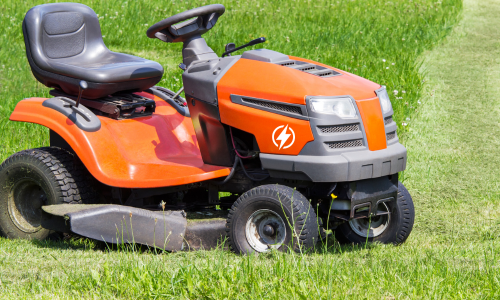When we think of activities that contribute to climate change, we often think of industrial-scale activities such as manufacturing. Rarely do we associate routine activities such as cutting grass or blowing leaves with climate change. Many leaf blowers and lawnmowers use an old two-stroke engine technology that mixes fuel and lubrication oil. In addition to considerable greenhouse gas emission per litre of fuel burned, burning oil and fuel emits a large amount of harmful toxic pollutants into the air, including carbon monoxide, nitrous oxides (which cause smog and acid rain), and carcinogenic hydrocarbons. As a result, routine activities such as lawn mowing or leaf blowing using fossil fuel-powered equipment lead to significant air pollution, health risks and noise pollution.

Many municipalities across Canada are exploring ways to electrify their light-duty equipment fleet. In Ontario, cities including Ottawa, Mississauga, Toronto, and Hamilton are working towards adopting battery-powered equipment to demonstrate climate leadership. In October 2021, the City Council of Toronto endorsed a ban on two-stroke engine leaf blowers, lawnmowers and other small engine equipment and vehicles. The City of Mississauga launched an electric grass cutting equipment pilot project in the same year. To date, Mississauga is the only municipality in Canada whose operational crew only uses battery-operated equipment. The City of Toronto started transitioning to electric off-road equipment in 2020 and now uses electric zero-turn mowers, forklifts, leaf blowers, utility/golf carts, floor scrubbers, and small tractors. The City of Ottawa will begin phasing out gas-powered lawn and yard equipment in the summer of 2022 and develop a Green Equipment Plan after conducting research and testing to determine available electric equipment options. The City of Hamilton is currently testing battery-powered lawn equipment. Please listen to this CAC Webinar to learn more about Mississauga’s pilot project and Ottawa’s preparation to electrify its light-duty equipment.
The benefits of electrifying light-duty equipment include reduced carbon emissions, increased safety for the equipment users and reduced noise pollution. Some challenges to electrifying municipal light-duty equipment include upfront capital costs in setting up the infrastructure and acquiring the equipment, lack of options for non-polluting alternatives, limited knowledge in existing products and manufacturers in the market, and infrastructure such as onboard chargers to charge the equipment on the go.
Electrifying light-duty equipment is a work in progress for municipalities. Testing to estimate energy use and battery life in different weather conditions needs to be done to match municipalities’ needs with the right equipment. Going forward, continuous improvements in technology and demand will propel innovation to improve battery performance and lower costs. In addition, transportation policies favouring the adoption of low emission vehicles and equipment will also accelerate the market transformation towards the electrification of light-duty equipment.
By Juliet Rennick, Outreach Coordinator, Clean Air Partnership